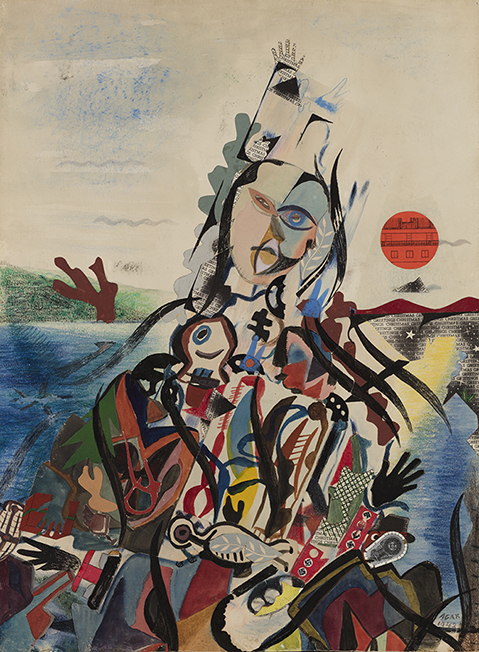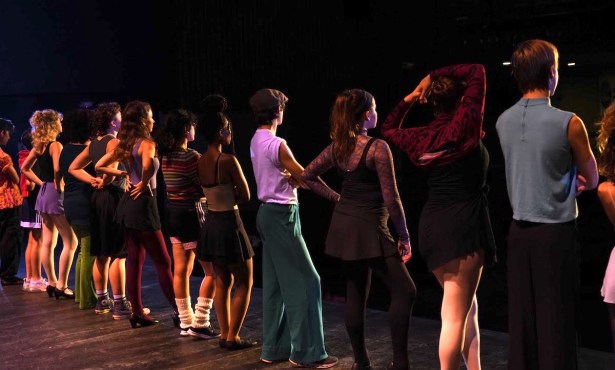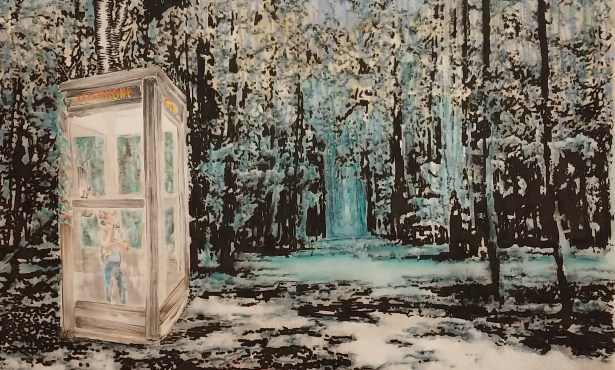‘British Art from Whistler to World War II’
SBMA Mounts Three New Shows During Remodel

As anyone who has ever remodeled a home or any other building knows, it’s a challenging task, especially if you plan to get anything else done while that work is going on. When the Santa Barbara Museum of Art (SBMA) broke ground on its comprehensive seismic retrofit/remodel project, director Larry J. Feinberg and his team of curators knew that the next five years would present major obstacles to their stated intention of remaining open throughout the process. Now, with the opening of the excellent new exhibition British Art from Whistler to World War II, as well as two other equally fascinating concurrent shows, the museum has demonstrated that it is fully and appropriately in step with the choice words of Winston Churchill, who famously said, “If you’re going through hell, keep going.”
The British art survey, which was curated by art historian Peyton Skipwith, includes 50 paintings, drawings, and sculptures encompassing the period 1890 through 1945, all of them taken from the museum’s permanent collection. This powerful yet underrated moment in the history of British culture presents an instructive contrast to the more radical experimentation then happening on the continent. On the one hand, modernism and all the other “-isms” of 20th-century European art were slower to catch on in England, where abstraction tended to be tempered by an ongoing allegiance to figuration. On the other, romanticism, with its emphasis on the consolations of nature and the centrality of a holistic approach to self-consciousness, lingered somewhat longer and more pervasively than it did in France, inflecting the art of Britain with a distinctively human set of characteristics. For example, the artists who studied at the Slade School in the period just before World War I — James D. Innes, Christopher R.W. Nevinson, Adrian Allinson, and Sir Stanley Spencer — will never achieve the level of recognition accorded to Paul Cézanne or Pablo Picasso, yet to this observer, their contributions register today with an almost uncanny degree of relevance, even urgency. Their commitment to clarity and the persistence of recognizable forms in their work is the result of a desire to retain the strengths they perceived in the art of the past even as they assimilated the techniques developing during this period of rapid aesthetic innovation. Allinson’s painting “Spring in the Abruzzi,” a gift to the museum by collectors Mary and Will Richeson Jr., merges the scrupulous awareness of human participation in the landscape typical of William Constable to the modernist representational tendencies of European post-impressionism.
Visitors to the British show would be well advised to set aside some extra time for a pair of splendid accompaniments, Seven Doors: Jan Tichy and the Chiaroscuro of Art Museum Collecting and Cecil Beaton’s London’s Honourable Scars: Photographs of the Blitz. Tichy is a Czech-born, Chicago-based contemporary artist working in the extended field of photography, and this exhibit, which occupies both the Ludington Court and a smaller adjacent gallery, is a multimedia meditation on the SBMA’s position in relation to its 75-year history. Combining objects from the museum’s collection with a time-based video projection and a lyrical series of prints examining the mathematics of pentagons, this is one of the headiest and most thoughtful explorations of what it means to be an art museum in the 21st century I have encountered. As an artist and as a thinker, Tichy is unparalleled. His ideas have ideas. And the beautiful, touching Blitz photos of Cecil Beaton that curator Charlie Wylie unearthed from the vaults, a gift from former museum director Ala Story, serve as a fine coda and as an indicator of how special a legacy this museum and all those who have served it are to our city.



